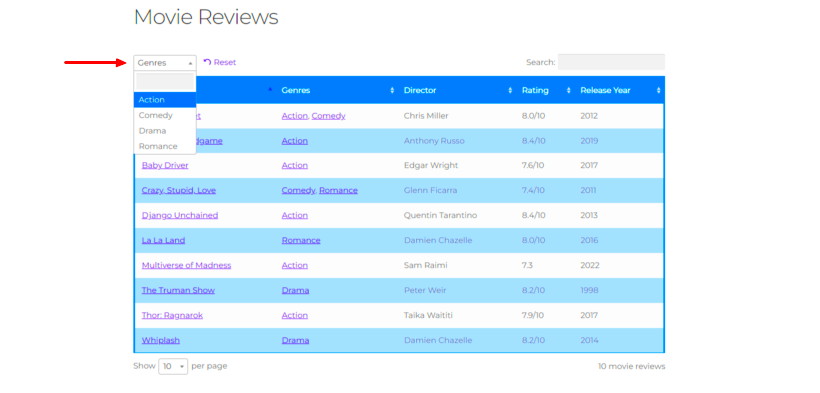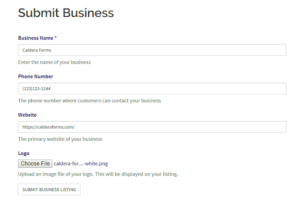WordPress Custom Post Types are a powerful feature that allows users to create content beyond the standard posts and pages. They help in organizing and categorizing content effectively. Have you ever wanted to create a portfolio, a listing, or even a specific type of blog post? Custom Post Types are your answer!
Essentially, they enable you to define your own content types and give structure to your website. For instance, if you’re running a real estate website, you can create a Custom Post Type for ‘Property Listings.’ Or if you’re a filmmaker, you could have a Custom Post Type for ‘Movies.’ This flexibility enhances the user experience and gives your site a unique flair!
By leveraging Custom Post Types, you’re not just limited to traditional content. You can also create tailored fields and attributes, ensuring all necessary information is captured. This capability is essential for businesses or creatives seeking to distinguish themselves in a crowded online space. Here’s a quick overview:
- Custom Post Types: Unique content structures designed for specific needs.
- Features: Custom fields, taxonomies, and more.
- Benefits: Better organization and improved user experience.
Understanding the Importance of Titles in Custom Post Types
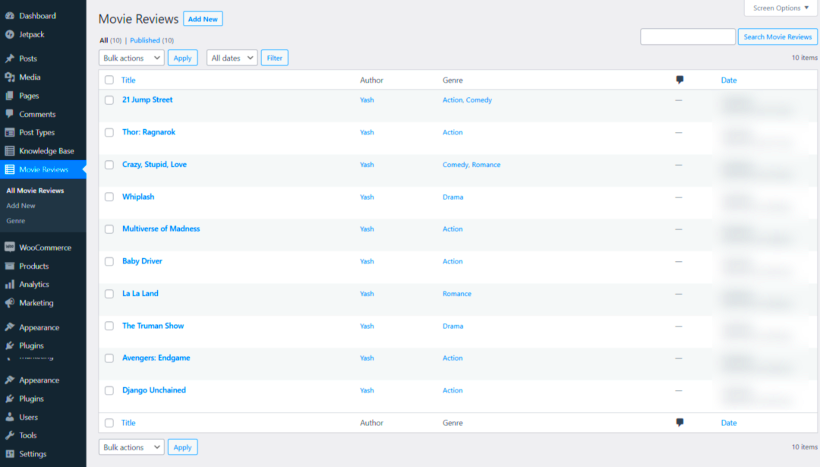
When it comes to Custom Post Types, titles play a pivotal role. Think of the title as the first impression your content makes on visitors. A compelling title not only grabs attention but also communicates essential information at a glance.
Here’s why titles are crucial:
- SEO Optimization: A well-crafted title can significantly improve your content’s visibility on search engines. Including relevant keywords allows search engines to index your content appropriately.
- User Engagement: Engaging titles entice users to click. A captivating title helps in increasing your click-through rate, making it more likely that visitors will read your content.
- Content Clarity: Titles should reflect the essence of the content. For example, a Custom Post Type like ‘Recipes’ should have descriptive titles, such as ‘Easy Vegan Pasta’ rather than just ‘Pasta’. This clarity helps users understand what to expect.
- Brand Identity: Consistent and meaningful titles contribute to your brand voice, helping users associate your content with specific themes or topics.
In summary, don’t underestimate the power of a good title in your Custom Post Types. It’s often the difference between a visitor clicking through or moving along—so make every title count!
What are WordPress Filters?
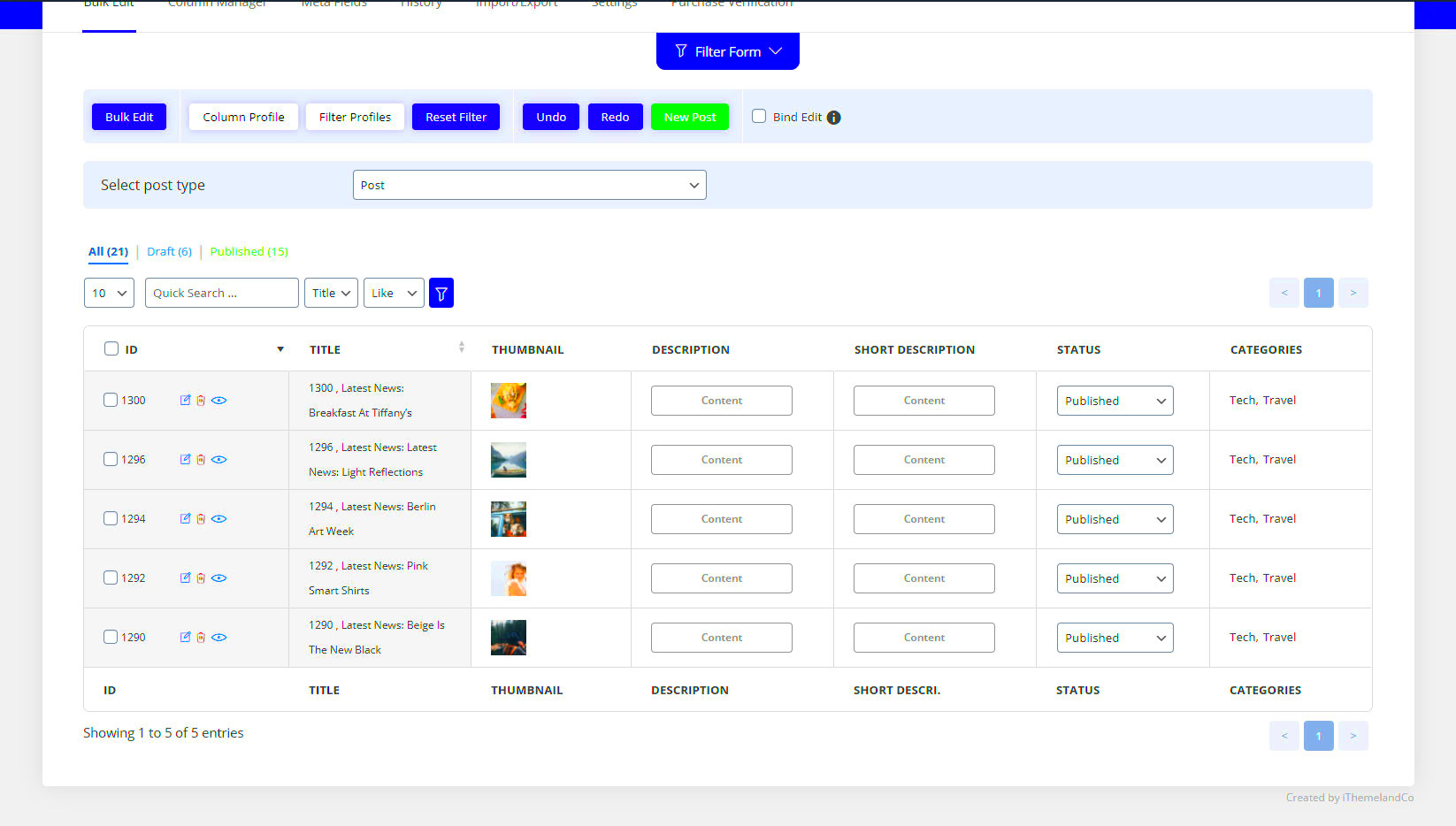
WordPress filters are a powerful feature that allows developers to modify and customize various aspects of the WordPress platform without altering the core code. Think of filters as magical hooks that let you ‘filter out’ unwanted data and replace it with something more fitting to your needs. They enable you to intercept data before it’s processed or displayed, giving you the flexibility to change how content is presented on your site.
In the realm of WordPress, filters run through the system every time a certain piece of content is loaded. This means you can adjust what you see on your screen at all times. Whether it’s altering the title of a post, modifying an excerpt, or changing a query’s output, filters offer a seamless way to tweak your website without needing to dive deep into coding.
Here’s how it works:
- Initial Data: When WordPress gathers data (like post titles), it can flow through various filters.
- Apply Filters: You can use functions to apply your custom logic to this data.
- Final Output: The modified data is then sent back to WordPress, ready to be displayed to users.
To give you a simple analogy, think of filters like a coffee filter. You pour in the grounds (the initial data), and what’s left after filtering is your delicious, refined cup of coffee (the final output). This customization plays a pivotal role when dealing with custom post types and is essential for tailoring your content exactly how you want it!
Key Filters for Editing Titles in Custom Post Types
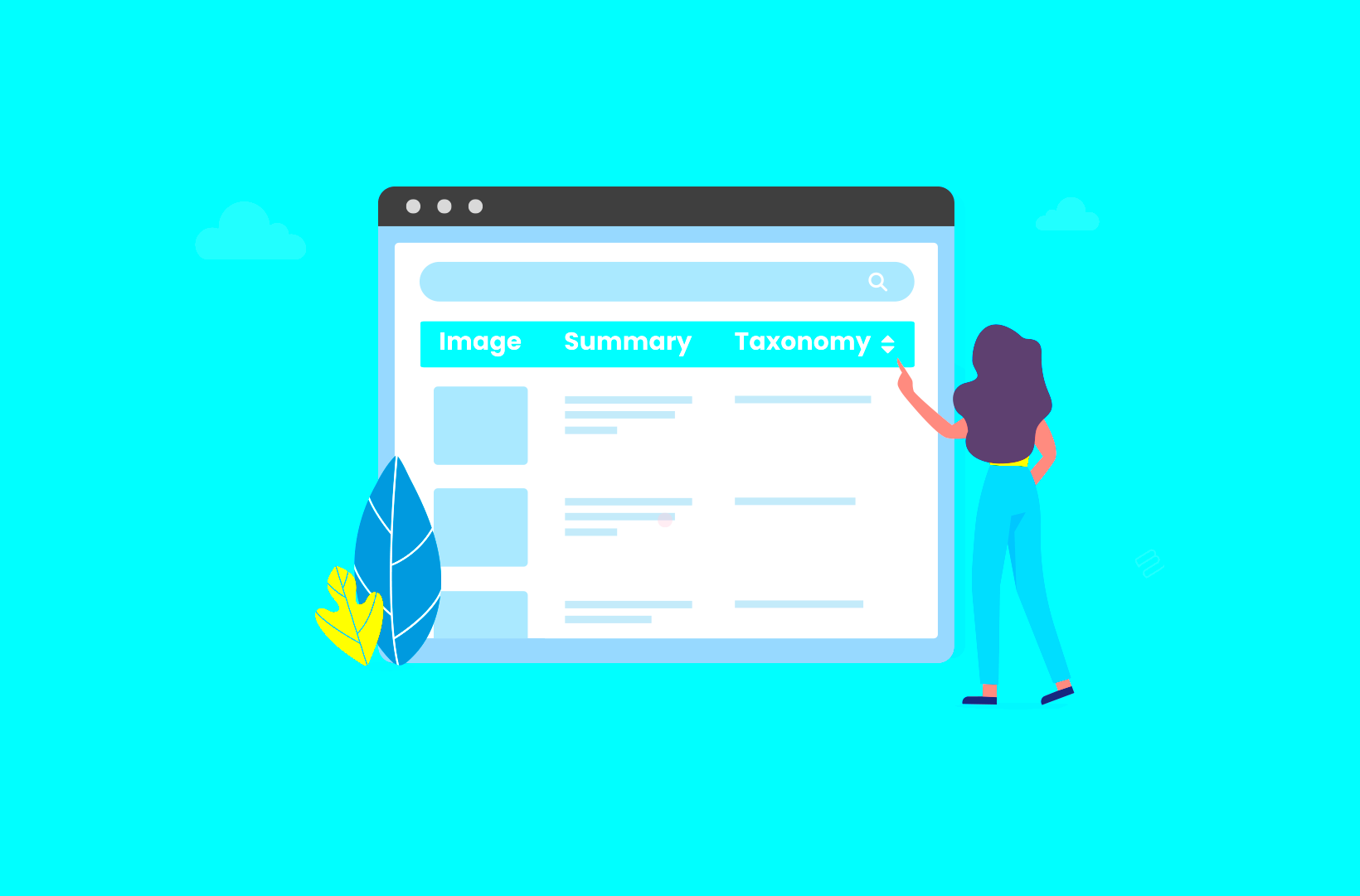
When it comes to working with custom post types in WordPress, filters specifically designed for modifying titles can help you streamline and enhance your content presentation. Here are some key filters that are invaluable for editing titles when saving custom post types:
| Filter Name | Description |
|---|---|
the_title |
Alters the title before it’s displayed, allowing you to change how the title appears to users. |
wp_insert_post_data |
Intercepts the title when saving a post – perfect for conditioning or formatting the title according to your needs. |
pre_get_posts |
A powerful filter to modify the query before the posts are fetched, potentially impacting how titles are fetched and displayed. |
post_updated_messages |
Allows you to modify the messages displayed to users after a post type is updated, including title-specific notifications. |
Utilizing these filters strategically can vastly improve the way you manage and display content associated with your custom post types. For instance, you might want to ensure that titles of your custom posts follow a specific format or include dynamic elements, like dates or user names. By applying these filters, you ensure that every aspect of your custom posts remains cohesive and user-friendly.
So, if you’re looking to accentuate the potential of your custom post types, don’t underestimate the power of these filters. They’re like little helpers, working behind the scenes to make your content shine!
5. Step-by-Step Guide to Using Title Filters
If you’re looking to spice up your WordPress site by customizing titles for your Custom Post Types, using title filters can be a game changer. Don’t worry if it seems a bit complex at first; I’m here to break it down for you in a simple, easy-to-follow guide. Let’s dig into it!
- Access Your Theme’s Functions.php File: Start by navigating to your WordPress dashboard. Go to Appearance > Theme Editor, and find the
functions.phpfile. This is where you’ll add your custom code. - Add the Filter Hook: In the
functions.phpfile, you’ll want to add your filter. Use the following code snippet as a starting point:
add_filter('the_title', 'custom_title_function', 10, 2);Here, custom_title_function is a placeholder for your custom function.
- Create Your Custom Function: Now that you have your filter established, define your custom function. For example:
function custom_title_function($title, $id) { if (get_post_type($id) == 'your_custom_post_type') { $title = 'Custom Prefix: ' . $title; } return $title;}This code will prepend “Custom Prefix: ” to the titles of your custom post types.
- Save Your Changes: Don’t forget to save your changes! After adding the code, click on Update File at the bottom of the editor.
- Test Your Titles: Go to the front end of your site and check the titles of your Custom Post Types. You should see the new formatting in action!
And there you have it! You’ve just customized your custom post types’ titles using WordPress filters.
6. Best Practices for Title Formatting
When it comes to formatting titles in WordPress, especially for Custom Post Types, it’s not just about making them look good—it’s also about ensuring they serve their purpose effectively. Let’s dive into some best practices that can elevate your title game!
- Be Descriptive and Clear: Your titles should accurately reflect the content of the post. Avoid vague terms and make sure the reader knows what to expect.
- Keep It Concise: Aim for a balance between descriptiveness and brevity. Ideally, titles should be around 50-60 characters long. Longer titles may get truncated in search results.
- Incorporate Keywords: If you’re trying to optimize for SEO, including relevant keywords in your title can help improve search visibility. Just ensure it sounds natural!
- Use Proper Formatting: Avoid ALL CAPS or excessive punctuation. Utilizing title case (capitalize the first letter of each significant word) often reads best. For example:
Best Practices for Title Formatting. - Maintain Brand Consistency: If you have an established brand voice, ensure your titles reflect that style. Consistent branding fosters recognition and trust.
By following these best practices, you can create titles that not only attract attention but also provide clear insights into your content, improving both user experience and SEO.
7. Common Issues and Troubleshooting Tips
Working with WordPress filters can make customizing your site a breeze, but it can sometimes lead to a few bumps along the road. Let’s dive into some common issues you might encounter when editing titles for custom post types and how to tackle them.
1. Filter Not Working as Expected
If you’ve implemented a filter but it doesn’t seem to be functioning, double-check the hook you’re using. Make sure it matches the specific post type you’re targeting:
- The filter should correspond to the title filter for that post type.
- Use
add_filter('the_title', 'your_function', 10, 2);correctly.
2. Incorrect Priority Levels
The priority parameter in the add_filter function determines the order in which your function runs. If you’re not seeing expected changes, your filter might be conflicting with others running on a higher priority. Consider adjusting the priority level:
- Lower numbers (1, 2) will run earlier.
- Higher numbers (10, 20) will run later.
3. Function Not Returning a Value
Each filter you create needs to return a value. If you forget the return statement in your function, the filter will break. Make sure your function ends with something like:
return $new_title;
4. Debugging with Error Logs
If things are still not working, enable debugging in your wp-config.php file:
- Set
define('WP_DEBUG', true); - Monitor any errors that appear after refreshing your custom post type page.
Lastly, don’t hesitate to reach out to the WordPress community forums. Other developers often have insights into the quirks and bugs you’ve encountered!
8. Examples of Custom Title Filters in Action
Getting your hands dirty with practical examples is one of the best ways to learn about WordPress filters. Here are a few cool snippets you can incorporate into your project to modify post titles for custom post types:
Example 1: Prefixing Titles
function prefix_custom_title($title, $id) { if (get_post_type($id) == 'your_custom_post_type') { $title = 'Prefix - ' . $title; } return $title;}add_filter('the_title', 'prefix_custom_title', 10, 2);This snippet will add a “Prefix -” before the title of your custom post type. A simple yet effective tweak!
Example 2: Conditional Behavior Based on User Role
function role_based_title($title, $id) { if (get_post_type($id) === 'your_custom_post_type' && current_user_can('editor')) { $title .= ' (Editor)'; } return $title;}add_filter('the_title', 'role_based_title', 10, 2);In this case, if the user is an editor, the title will have ” (Editor)” appended. Perfect for distinguishing titles based on roles!
Example 3: Removing Certain Words from Titles
function remove_words_in_title($title, $id) { if (get_post_type($id) == 'your_custom_post_type') { $title = str_replace('Word', '', $title); } return $title;}add_filter('the_title', 'remove_words_in_title', 10, 2);This example uses str_replace to remove specific words from the title. This can help you streamline titles for better SEO and clarity.
These examples showcase the flexibility of filters in WordPress. Feel free to modify the snippets to fit your specific needs! Happy coding!
9. Conclusion: Enhancing Your Custom Post Types with Filters
When it comes to managing a WordPress website, particularly one that utilizes custom post types, having the ability to edit titles is crucial. By using filters, you can effortlessly customize how titles are displayed and saved. This not only enhances your site’s accessibility but also ensures that titles are SEO-friendly and relevant to your audience’s search queries.
Filters provide a powerful tool to modify titles dynamically as custom post types are created or updated. Here’s a quick recap of the benefits:
- Improved User Experience: Tailoring titles based on custom logic makes it easier for users to find content that meets their needs.
- SEO Advantages: Optimizing titles can lead to better search rankings, driving more organic traffic to your site.
- Consistency: By applying uniform formatting to titles, you can maintain a cohesive visual identity across your website.
In summary, leveraging WordPress filters not only enhances the functionality of your custom post types but also elevates the overall presentation of your content. As you continue to build and refine your site, remember that a little customization can go a long way in creating a better experience for both you and your audience.
10. Further Resources and Recommendations
If you’re eager to dive deeper into the world of WordPress filters and custom post types, there are numerous resources that can guide you through advanced implementations and tips. Here’s a curated list to get you started:
| Resource | Description |
|---|---|
| WordPress Codex | The official documentation from WordPress, which is a great starting point to learn about hooks, filters, and custom post types. |
| WPBeginner | A premiere resource for beginners, offering tutorials and guides on various aspects of WordPress development. |
| WPMU DEV Blog | A blog packed with in-depth articles on WordPress functionality and best practices, including posts specifically about filters. |
Additionally, consider joining WordPress communities and forums, such as Stack Overflow and WordPress Support Forums, where you can seek advice from experienced developers and share your insights. Engaging in community discussions can provide invaluable knowledge and tips to further enhance your WordPress skills.
Happy custom post typing!

